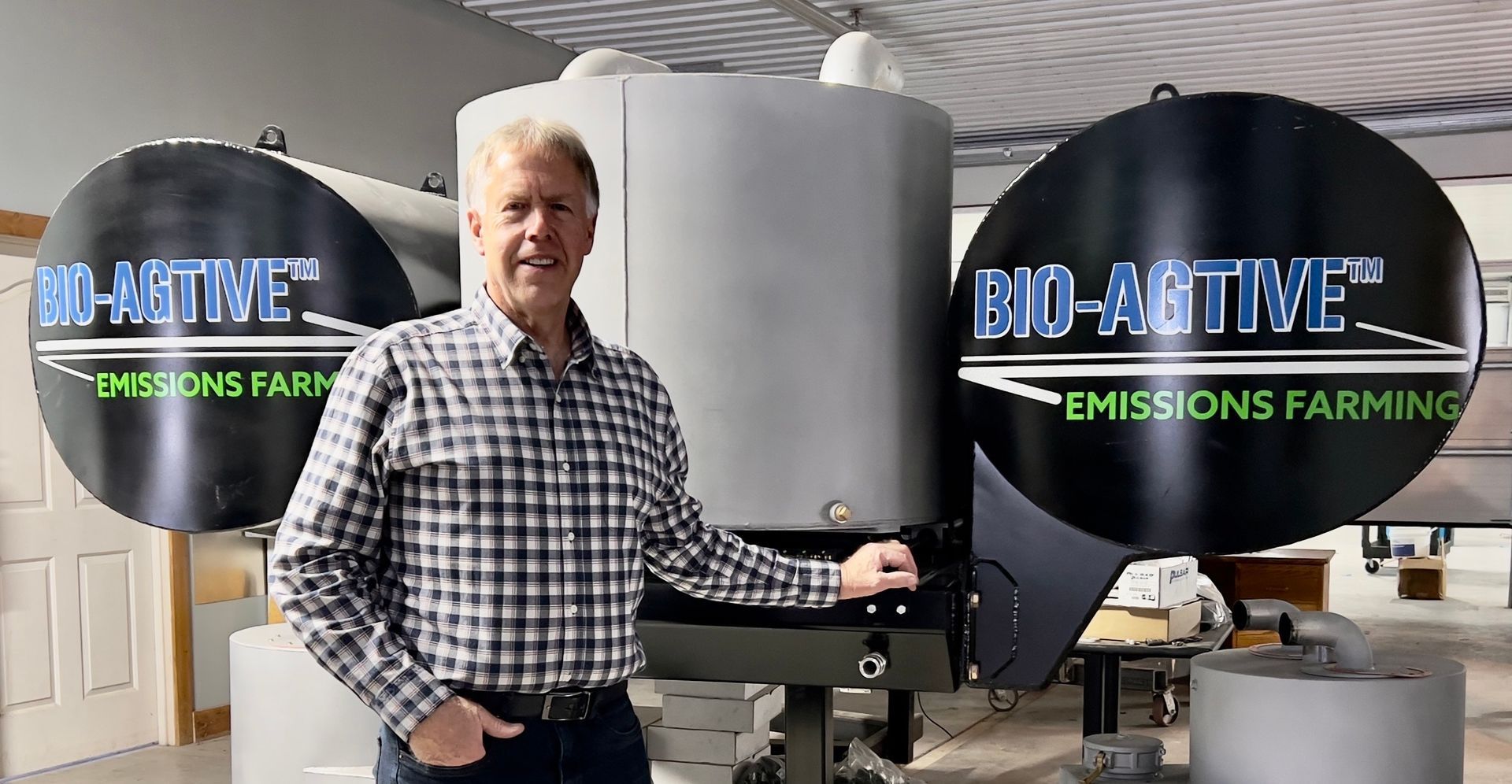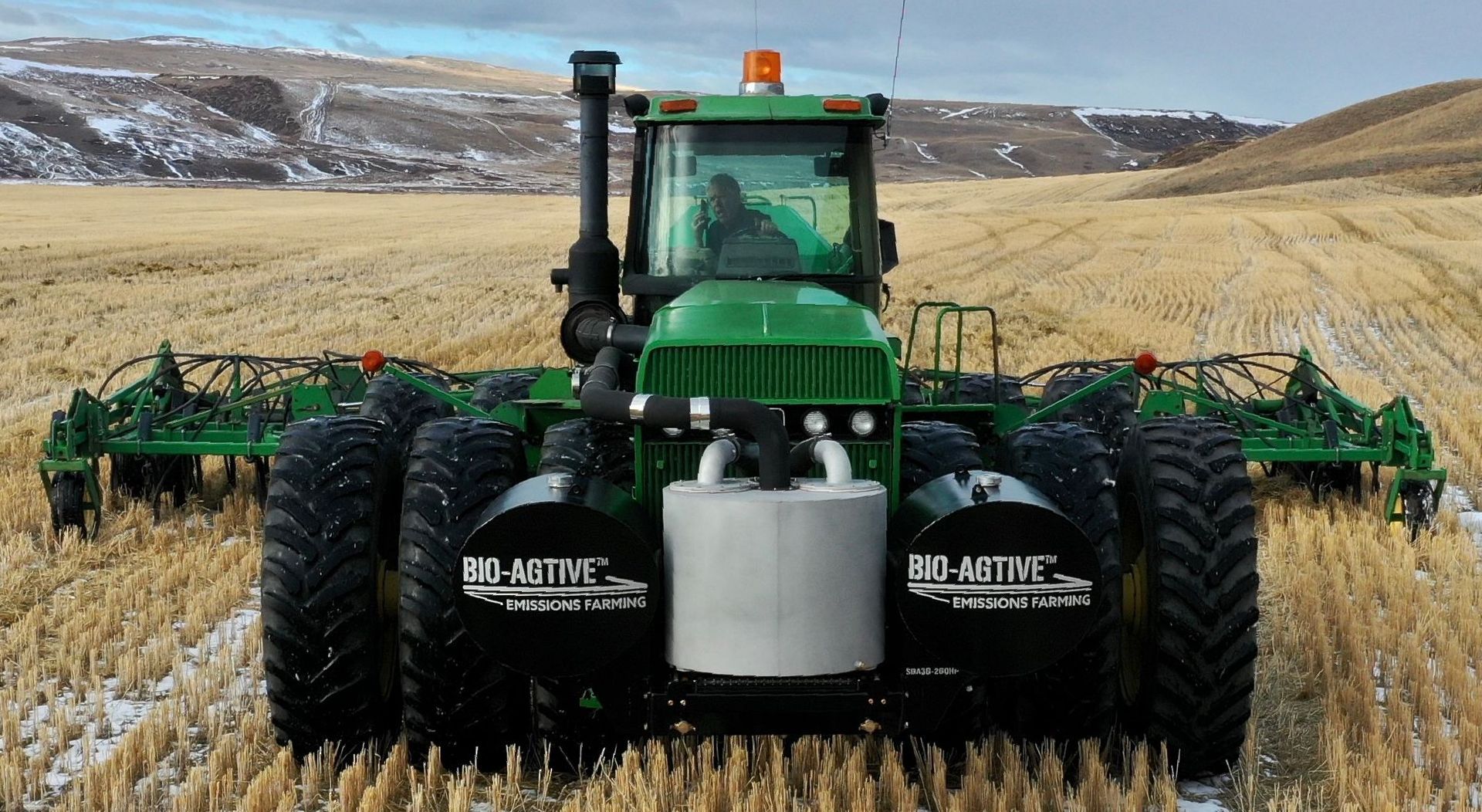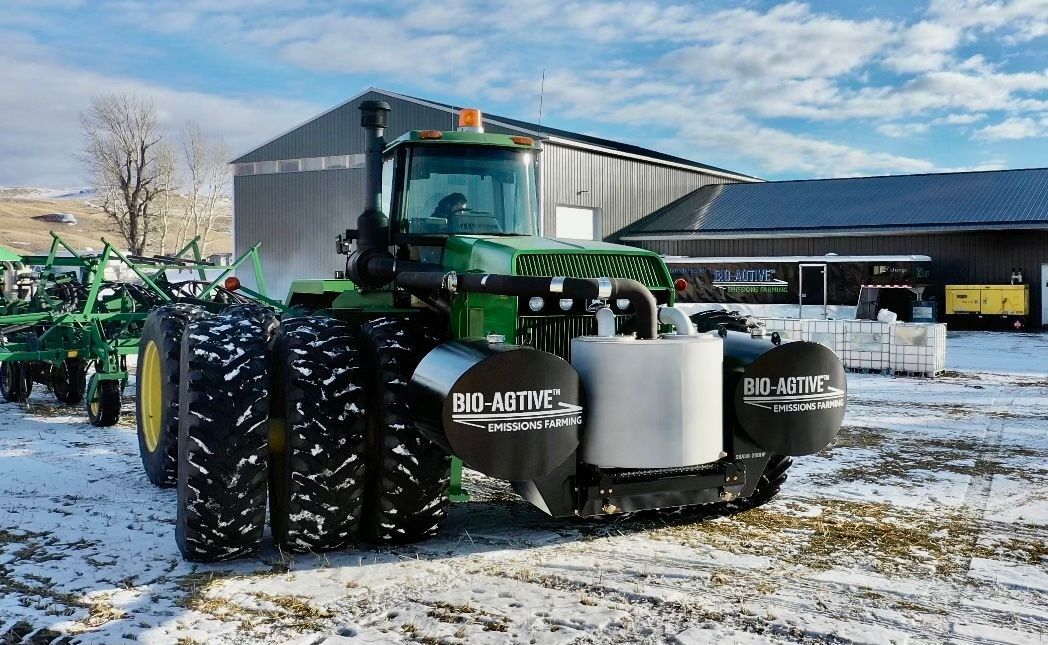Gary Lewis knows that farmers, food consumers and our environment deserve better than the direction we’re headed — and his ground-breaking new technology is paving the way.
Farming is the lifeline of many rural Alberta communities. Not only is it part of our culture, history and unique way of life, it’s also a source of our global food supply.
But what were once thriving local agricultural economies are being pushed to the brink. Today, many family farmers are being subsidized, nearly 70% are working off-farm jobs, and their children and grandchildren are seeing less livelihood potential carrying on the multi-generational operation.
There are many complex factors threatening the future of family farms and rural communities, but the rising costs of supplies, depleting land and extreme weather caused by climate change are major contributors.
The odds are stacked, but farmers’ creativity should never be underestimated. For centuries, they’ve been the innovators of the world. And as long as farmers like Gary Lewis, a fourth-generation wheat grower from Pincher Creek have anything to say about it, farming in rural Alberta will persevere.
From farmer to carbon expert
The technology
The centrepiece product from Bio-Agtive is the
Fusion Tank, which is essentially a system that mounts to the front of any tractor. It takes all the emissions from the internal engine combustion, recycles it into rich plant nutrition, and sprays it into the soil while the farmer seeds, harvests or irrigates.
“What we're doing with this machine is, we’re taking that fire that's under the hood, and people don't realize how hot it is and how much pressure there is there, and we're oxidizing what used to be a plant — it could be coal, it could be diesel fuel, it could be vegetable oil — and putting it right back into the soil,” Gary explains. “And it's perfect plant food.”
The benefits of the technology as it exists today are three-fold: Cost-savings to farmers, more nutritious food for consumers, and carbon-footprint reduction.
1. Farmers save money
The price of all four fertilizer categories – nitrogen, phosphorus, potassium and sulphur – have continued to increase. But it’s nitrogen, the most in-demand and critical to plant growth, that has surged the most. Data compiled by Farm Credit Canada suggests nitrogen fertilizer prices have increased by 148% from $550 per tonne in 2020-21 to $1,365 per tonne in 2022-23. Costs have risen steadily since the third quarter of 2021, reaching levels unseen since the 2008 financial crisis.
As the Bio-Agtive Fusion Tank creates and sprays natural plant food, everything the plant needs to thrive is returned to the soil. This eliminates the need for synthetic nitrogen fertilizer. In fact, since using the technology on his own farm, Gary has not purchased fertilizer for his crops in over two decades.
Gary has saved his family hundreds of thousands of dollars and, importantly, has seen no difference in his yield. Bio-Agtive’s data has shown farming with this method is approximately ¼ the cost of the fertilizers necessary to farm conventionally, while achieving the same quantity at harvest.
2. Reduces harmful emissions
Emissions from farm equipment like tractors are notable but pale in comparison to the destructive gases that are released from the use of synthetic fertilizer. Gary says many people don’t realize that they actually prevent plants from doing what they do naturally, which is pull carbon from the air. This has a cascading effect on the plant’s organic processes, causing the crops to emit millions of tonnes of harmful N2O and CO2 into the atmosphere, and causing the quality of the soil to decline year after year.
“We're practicing it, it's not just an idea. We're closing the carbon loop,” says Gary. “We're causing our landscape to photosynthesize more and taking control of these greenhouse gases. That's why we call it emissions farming.”
3. Grows more nutritious food
The Bio-Agtive method mimics plants’ natural processes by stimulating the microbiome in the soil, enabling them to produce higher-quality food. Even livestock are producing higher quality products because they’re eating more nutritious feed.
“This technology causes wheat to fix nitrogen with a free living bacteria at a faster, higher rate,” says Gary. “So we’ve had 20 percent protein wheat and repeated that on the same land without fertilizer for 20 years. Cows are milking more milk, animals are eating straw as preferential to even hay that's grown with fertilizer.”
BioAgtive: Alberta start-up turned international solution
Currently, Bio-Agtive employs 15 people at the Pincher Creek factory where the systems are built. The sixth generation of the Fusion Tank which boasts quicker installation and improved user-friendliness will be on the market for the 2023 crop season — but Gary couldn’t have gotten to this point of success alone.
They say it takes a village, but in the case of Bio-Agtive, it took an international community to help develop this industry-disrupting product. Gary’s engaged farmers across Canada, Africa and Australia, all facing the same problems and all with the same goal of re-establishing prosperity on the family farm.
“We've travelled all over the world collaborating and working with the creativity of farmers,” Gary says. “Agriculture is super slow. You do an experiment one year, learn from that and try again the next year. The collaboration helps to keep developing it further and further.”
Today, 50 farmers are using the Bio-Agtive method today, covering more than 110,000 acres worldwide.
Breaking new ground
Discover the technology
In the long-term, the company hopes to reignite life in rural communities through farming, to create consumer food products that are nutritious and that restore topsoil season after season, and to take the food and agriculture industry from being the third largest emitter in the world to net-negative. These are hefty goals, but Gary is confident in his innovation and the community of farmers who are ready to take control.
“Things won’t change unless we make a change today. Today we say no more. Today is the day, not 2050.”
To learn more about Bio-Agtive visit their
website or attend the weekly Zoom meeting Gary and his team conduct for farmers to tune in, ask questions and hear from other farmers. All are invited to discover the technology!
Join Bio-Agtive’s Zoom call every Thursday at 8:00 AM (MST)







